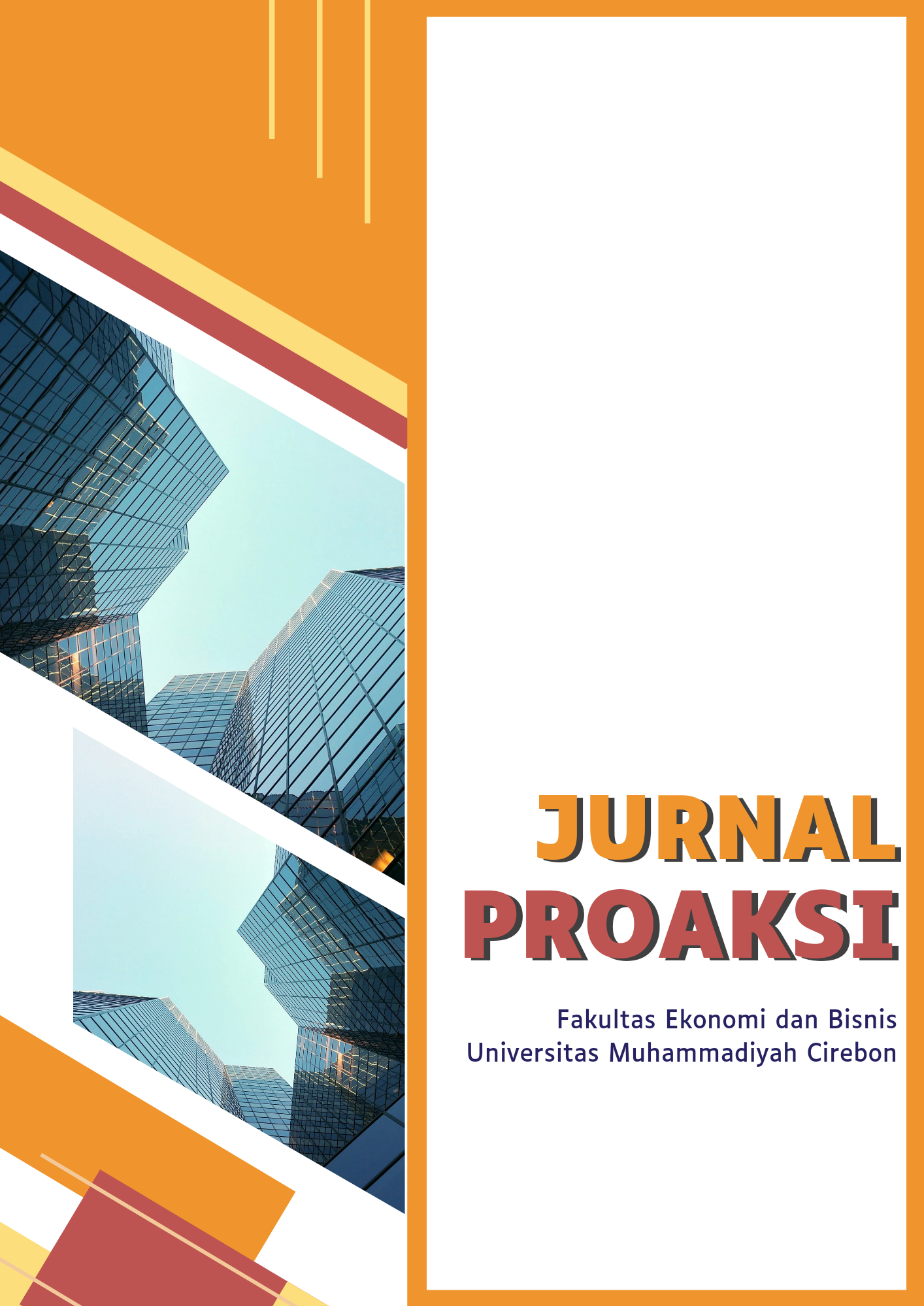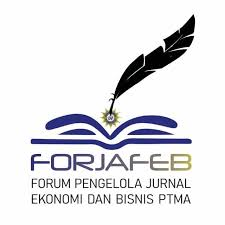Accounting Choice for Intangible Assets in Indonesia’s Entertainment and Media Entities
DOI:
https://doi.org/10.32534/jpk.v11i4.6652Keywords:
Accounting Choice, Intangible Asset, Informative, Opportunistic, Manager BehaviourAbstract
A good understanding of the management and reporting of intangible assets is one of the efforts made by the entity to maintain its reputation, financial performance, and the trust of investors and stakeholders. The existence of gaps in accounting practices causes the emergence of differences in managers’ behaviour in preparing financial statements. This is what makes the income strategy related to intangible assets can be informative or opportunistic. By analyzing factors such as entity size, leverage, and sales compensation, this study aims to examine whether these strategies are informative or opportunistic. This study is a cross-sectional and time-series study with a quantitative design. The data collected were taken from the Annual Report of Entity of Entertainment and Media listed on the IDX with a period of 2021-2022. The size of the entity has a significant effect on income strategies that shows intangible assets reporting tends to be conservative by presenting informatively. Meanwhile, highly leveraged entities are more likely to adopt aggressive strategies; in other words, leverage influences opportunist behaviour in expressing income strategies regarding intangible assets. The impact of sales compensation on financial managers' income strategies for intangible assets is not consistent and can be influenced by various factors.
Downloads
References
Al-Asfour, F. (2024). Earnings Management: A Synthesis of a Century of Research. SSRN Electronic Journal. https://doi.org/10.2139/ssrn.4799791
Alfi, M. A. D. W., & Suwaidi, R. A. (2023). Analisis Nilai Perusahaan Pada Perusahaan Consumer Cyclicals Di Bursa Efek Indonesia. Jurnal E-Bis, 7(2), 647–658. https://doi.org/10.37339/e-bis.v7i2.1313
Aridyanto, R. M., & Marfiana, A. (2021). Pengaruh Keahlian Keuangan, Kompensasi Direksi, Profitabilitas, Pertumbuhan Perusahaan dan Kepemilikan Institusi Pada Penghindaran Pajak Perusahaan. Jurnal Manajemen STIE Muhammadiyah Palopo, 7(1), 31–47. https://doi.org/http://dx.doi.org/10.35906/jm001.v7i1.719
Bansal, M. (2024). Earnings management: a three-decade analysis and future prospects. Journal of Accounting Literature, 46(4), 630–670. https://doi.org/10.1108/JAL-10-2022-0107
Brown, A., Gregory, J., & Wunsch-Vincent, S. (2022, November 11). Intangible Assets Grew to USD 74 trillion. Which are the most Intangible-asset Intensive Firms? WIPO (Global Innovation Index).
Bui, T. H. (2024). Past, present, and future of earnings management research. Cogent Business and Management, 11(1). https://doi.org/10.1080/23311975.2023.2300517
Christian, N., & Julyanti, L. (2022). ANALISIS KASUS PT. ASURANSI JIWASRAYA (PERSERO) DENGAN TEORI DASAR FRAUD. Jurnal Ilmiah MEA (Manajemen, Ekonomi, Dan Akuntansi), 6(2), 153–165. https://doi.org/https://doi.org/10.31955/mea.v6i2.1982
Chung, D. J., Kim, B., & Syam, N. B. (2020). A Practical Approach to Sales Compensation: What Do We Know Now? What Should We Know in the Future? Foundations and Trends® in Marketing, 14.
Dancaková, D., Sopko, J., Glova, J., & Andrejovská, A. (2022). The Impact of Intangible Assets on the Market Value of Companies: Cross-Sector Evidence. Mathematics, 10(20). https://doi.org/10.3390/math10203819
Fadhilah, A., Iqbal, M., Wijaya, M. M., & Ihsan, S. H. (2023). Analisis Pengaruh Faktor Behavior Finance dan Pengungkapan Intangible Asset Terhadap Pengambilan Keputusan Oleh Investor. Jurnal Ilmiah Multidisiplin, 2(8). https://doi.org/https://doi.org/10.56799/jim.v2i8.1909
Faster Capital. (2024, June 12). Amortization of Intangibles: Monetizing Entertainment Rights for Success. https://fastercapital.com/content/Amortization-of-Intangibles--Monetizing-Entertainment-Rights-for-Success.html
Florin, B. (n.d.). DEVELOPMENT OF DECISION MAKING BY MANAGERS WITH FINANCIAL AND ACCOUNTING INFORMATION.
Global Innovation Index. (2022). INDONESIA (The Global Innovation Index (GII) ranks world economies according to their innovation capabilities).
Grzybek, O. (2023). Are accounting choices for intangible assets informative or opportunistic? Evidence from Poland. Journal of International Accounting, Auditing and Taxation, 51. https://doi.org/10.1016/j.intaccaudtax.2023.100549
Haryadi, D., Leon, H., & Ricky. (2023). Peran Direktur Wanita Dalam Pelaporan Keuangan Konservatif. SEIKO : Journal of Management & Business, 6(2), 336–346.
Hazan, E., Smit, S., Woetzel, J., Cvetanovski, B., Krishnan, M., Gregg, B., Perrey, J., & Hjartar, K. (2021). Getting tangible about intangibles The future of growth and productivity? www.mckinsey.com/mgi.
Heryitno, A. (2022). Pengaruh Motivasi Kerja dan Kompensasi Terhadap Kinerja Karyawan Pada PT Bentoro Adisandi Ivena Batam. In Skripsi. Program Studi Manajemen Universitas Putera Batam.
Holthausen, R. W. (1990). ACCOUNTING METHOD CHOICE Opportunistic Behavior, Efficient Contracting, and Information Perspectives*. Journal of Accounting and Economics, 12, 207–218.
Hussinki, H., King, T., Dumay, J., & Steinhöfel, E. (2024). Accounting for intangibles: a critical review. Journal of Accounting Literature. https://doi.org/10.1108/jal-05-2022-0060
Isdina, S. H., & Putri, W. W. R. (2021). Pengaruh Laba dan Arus Kas Terhadap Kondisi Financial Distress. Jurnal Ilmiah Akuntansi Kesatuan, 9(1), 147–158. https://doi.org/https://doi.org/10.37641/jiakes.v9i1.490
Jaya, E. P., & Kuswanto, R. (2021). PENGARUH RETURN ON ASSETS, DEBT TO EQUITY RATIO DAN PRICE TO BOOK VALUE TERHADAP RETURN SAHAM PERUSAHAAN LQ45 TERDAFTAR DI BURSA EFEK INDONESIA PERIODE 2016 –2018. Jurnal Bina Akuntansi, 8(1), 51–67. https://doi.org/https://doi.org/10.52859/jba.v8i1.136
Kullab, Y., & Yan, C. (2018). THE IMPACT OF INSTITUTIONAL OWNERSHIP ON INCOME ACCOUNTING STRATEGY: EVIDENCE FROM BAHRAIN. Academy of Accounting and Financial Studies Journal, 22(1). https://www.abacademies.org/articles/the-impact-of-institutional-ownership-on-income-accounting-strategy-evidence-from-bahrain-1528-2635-22-1-140.pdf
Muyasaroh, A., & Nurhayati, R. (2019). Analisis Tingkat dan Kualitas Pengungkapan Aset Takberwujud pada Perusahaan Berbasis Ilmu Pengetahuan atau Teknologi di Indonesia. Accounting and Business Information System Journal, 7(4), 1–14. https://doi.org/https://doi.org/10.22146/abis.v7i4.58864
Novy-Marx, R. (2020). Profitability Factor Details: Taxable Income is Tied to Future Profitability and Returns. Alpha Architect. https://alphaarchitect.com/2020/12/profitability-and-future-stock-returns/
Nyabakora, W. I. (2023). Earnings management in public companies: a bibliometric review. SN Business & Economics, 3(9). https://doi.org/10.1007/s43546-023-00546-w
Qureshi, M. J., & Siddiqui, D. A. (2021). The Effect of Intangible Assets on Financial Performance, Financial Policies, and Market Value of Technology Firms: A Global Comparative Analysis. Asian Journal of Finance & Accounting, 12(1). https://doi.org/10.5296/ajfa.v12i1.16655
Rahma, M., Wijaya, M., & Priyatama, T. (2021). Analisis Pengungkapan Modal Intelektual. Jurnal Ilmiah Universitas Batanghari Jambi, 21(3), 1232. https://doi.org/10.33087/jiubj.v21i3.1663
Riordan, M. H., & Williamson, O. E. (1985). ASSET SPECIFICITY AND ECONOMIC ORGANIZATION. International Journal of Industrial Organization, 3, 365–378.
Scott, W. R. (2015). FINANCIAL ACCOUNTING THEORY Seventh Edition. www.pearsoncanada.ca.
Sharma, A., Branch, B., Chgawla, C., & Qiu, L. (2023). Explaining Market-to-Book Explaining Market-to-Book The relative impact of firm performance, growth, and risk. University West of Georgia. https://www.westga.edu/~bquest/2013/MarketToBook2013.pdf
Siswantoro. (2020). Pengaruh faktor tekanan dan ukuran perusahaan terhadap kecurangan laporan keuangan. Jurnal Akuntansi, Keuangan, Dan Manajemen, 1(4), 287–300. https://doi.org/10.35912/jakman.v1i4.76
Susilowati, S., & Oktarina, D. (2021). PENGUNGKAPAN MODAL INTELEKTUAL. Jurnal Ecopreneur, 4(1). www.idx.co.id
Sutjiadi, A., Moeritty, K., Kurniawati, M., & Nitiwaluyo, R. (2014). THE INFORMATION PERSPECTIVE ON DECISION USEFULNESS.
Utomo, A. I. (2015). FAKTOR-FAKTOR YANG MEMPENGARUHI PENGUNGKAPAN MODAL INTELEKTUAL DAN DAMPAKNYA TERHADAP NILAI PERUSAHAAN. In Skripsi. Program Studi Akuntansi Universitas Diponegoro.
Wardhani, A. P., Kusumawardhani, A., & Ubaidillah, M. (2021). The Effect of Intangible Asset On Competitive Advantage and Firm Performance; Study on Budget Accommodation in Semarang City. SALAM: Jurnal Sosial Dan Budaya Syar-i, 8(2), 383–404. https://doi.org/10.15408/sjsbs.v8i2.19987
Watts, R. L., & Zimmerman, J. L. (1978). Towards a Positive Theory of the Determination of Accounting Standards. THE ACCOUNTING REVIEW, Lili(1).
Watts, R. L., & Zimmerman, J. L. (1986). Positive Accounting Theory. Prentice-Hall, Englewood Cliffs, N.J.
Wijaya, R. A., & Suganda, R. (2020). Pengaruh investment opportunity set, kinerja keuangan, dan intangible asset terhadap nilai perusahaan. AKUNTABEL, 17(2), 215–222. http://journal.feb.unmul.ac.id/index.php/AKUNTABEL
Zmijewski, M. E., & Hagerman, R. L. (1981). AN INCOME STRATEGY APPROACH TO THE POSITIVE THEORY OF ACCOUNTING STANDARD SETTING/CHOICE. Journal of Accounting and Economics, 3, 129–149.
Downloads
Published
Issue
Section
License
Copyright (c) 2024 I'ana Umma, Piscabrian Boeny Saputra, Muhammad Ubaidillah, Muhammad Wildan Sholih

This work is licensed under a Creative Commons Attribution 4.0 International License.




















